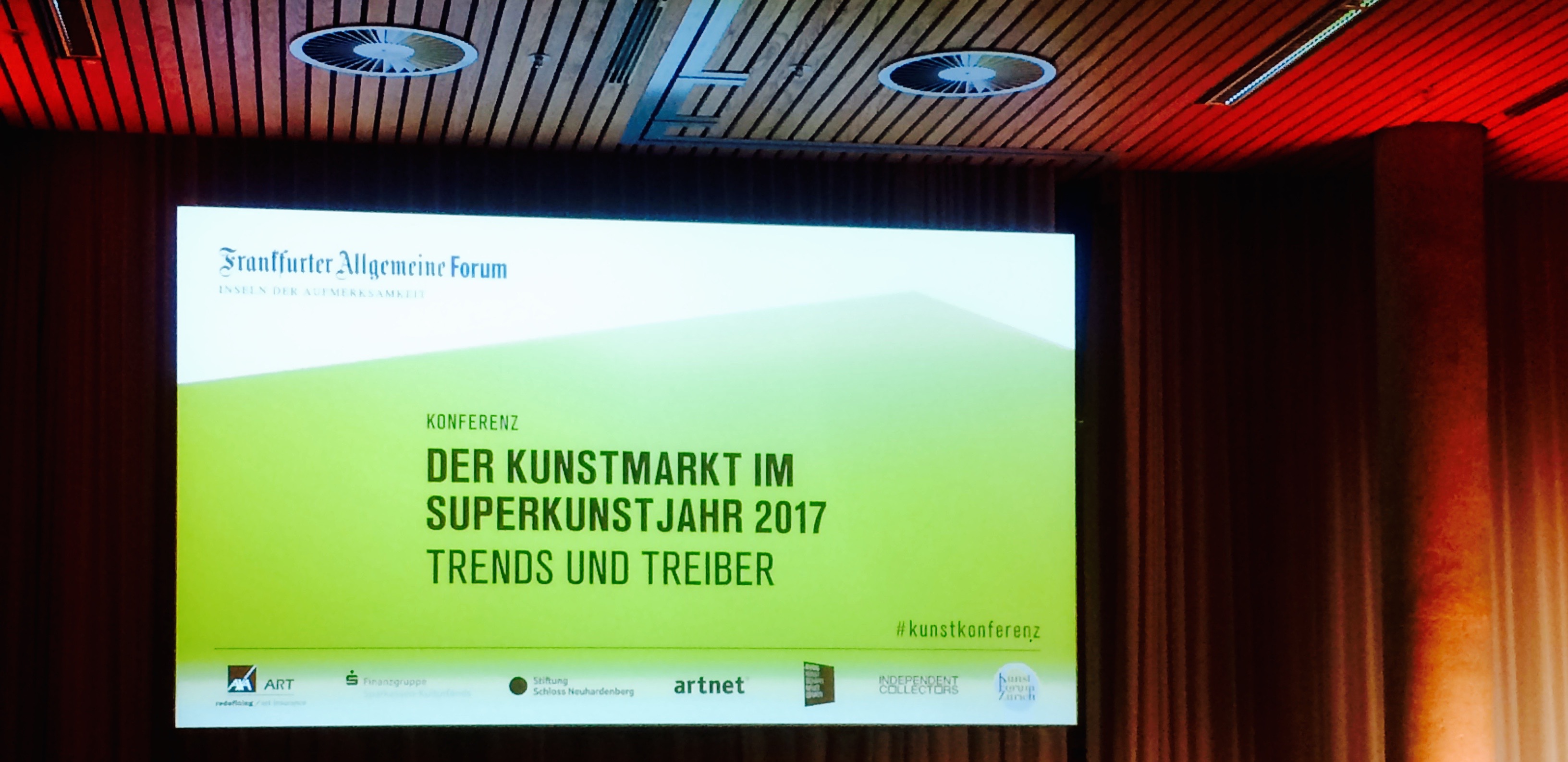
Frankfurter Allgemeine Forum Art Conference 2017
6. December 2017Der Kunstmarkt im Superkunstjahr 2017 (The Art Market in the Super Art Year 2017) was the name of the Frankfurter Allgemeine Forum Art Conference, which took place in Berlin a few days ago. Ten years have passed since the last “super art year”, because the year is only super when documenta, Biennale of Venice and Skulptur Projekte Münster take place in the same year. Since then, much has happened on the art market and elsewhere. This is evident in the breadth of subject matter, which ranges from gallery and auction trends to Brexit and Artificial Intelligence.
Discussion turned to the death of the gallery, particularly galleries in the middle-price bracket. More and more is expected of smaller galleries and, at the same time, they are faced with the dominance of the larger ones. Auction houses are also contributing to this worrying trend. Not only are they continuing to expand their private sales departments, they are also active in areas not previously associated with auction houses: artist estates, art advisory, art authentication and sales directly from the artists themselves. However, just how much customers prefer the authentication of an auction house (which then sells the work on) to that of a neutral provider remains to be seen.
One thing that will certainly be remembered from this year’s market is the auction of Leonardo da Vinci’s Salvator Mundi at Christie’s in New York. Although this sale has already been discussed extensively, it is so important that it cannot go unmentioned, albeit mainly to point out that the da Vinci alone is not the art market.
Nevertheless, Georgina Adam accepts that this sale will have an impact on the market: more lots will be provided with guarantees in the future (in simple terms: a minimum bid will be secured for each lot before the auction), the market for the Old Masters is likely to be given a boost and we will probably see more of a mixture of auction categories – after all, the record price for the Renaissance painting was achieved at an auction for contemporary art!
In contrast, the United Kingdom’s exit from the EU in 2019 will probably have less influence on the art market than expected, although there are likely to be changes in taxes and artists’ resale rights. Thaddaeus Ropac notes that the art market has already surpassed geopolitical boundaries – supported by international trade fairs, but also by online commerce, which will become increasingly important in the future.
Several auctioneers are already holding auctions where bids can only be made online. This concept is especially suitable for artworks in the lower price bracket. Artsy and other online trading platforms report steadily rising subscriber numbers and sales. Various technology companies make it easy for buyers and galleries to connect across continents. A detailed consultation by the gallerist in person, however, is becoming a thing of the past. As a result, artworks are perceived less and less as art, but increasingly as mere consumer goods.
In his research on artificial intelligence, Fabian Bocart also looks at commodification. He is developing a program for Artnet, which he hopes will be able to objectively recognise whether a particular piece is actually a work of art or not and calculate what value can be attributed to it. However, it is not quite clear how reliable the results will be, what data they will be based on, and what exactly sets them apart from traditional price research, except for the time factor. This research is obviously still in its infancy.
This year’s art conference was the last under the auspices of the Frankfurter Allgemeine Forum. Thank you for the interesting presentations and discussions, which were of a consistently high standard. The next one will be organised by Convent Kongresse GmbH, which is part of the ZEIT publishing group. We are looking forward to it.
